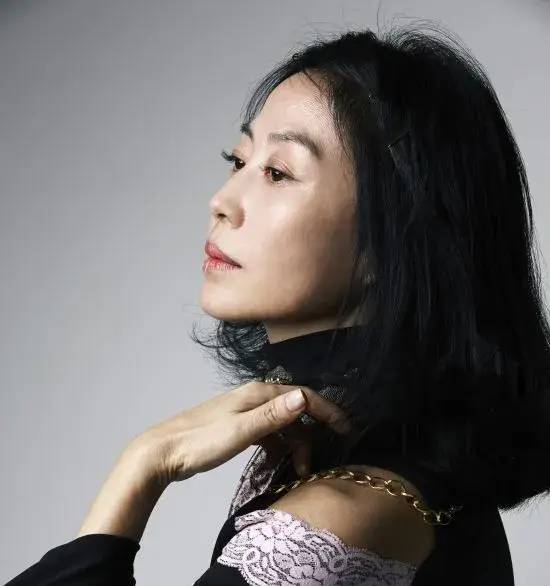

Cho Yong-pil stands as a towering figure in the history of Korean popular music, earning titles such as “King of Pop” and “Gawang” (the king of singing) for his unparalleled influence, longevity, and artistry. Over a career spanning more than five decades, Cho has not only shaped the soundscape of Korean music but has also continually reinvented himself, remaining relevant and beloved across generations. His journey from a young guitarist in the late 1960s to a living legend in the 2020s is a testament to his talent, resilience, and relentless pursuit of musical excellence.
Early Life and Musical Beginnings
Born on March 21, 1950, in Hwaseong, South Korea, Cho Yong-pil’s fascination with music began at an early age. Inspired by Ray Charles’ harmonica playing, he aspired to become a musician. As a teenager, he moved to Seoul and attended Kyungdong Middle School, where he became friends with future actor Ahn Sung-ki. Cho’s musical journey officially began in 1968 when he formed the rock band Atkins, performing for the Eighth U.S. Army stationed in South Korea. This experience exposed him to Western music styles and performance techniques, which would later influence his own compositions.
Throughout the late 1960s and 1970s, Cho played guitar in various bands, including Five Fingers and the Kim Trio. These formative years honed his skills as a guitarist and performer, and he became known for his ability to blend Western rock with Korean musical sensibilities. In 1976, Cho made his solo debut with the single “Come Back to Busan Port,” a heartfelt ballad that resonated deeply with the Korean public and catapulted him to national fame.
Breakthrough and Early Success
“Come Back to Busan Port” marked the beginning of Cho’s meteoric rise. The song’s success led to his first full-length album, Woman Outside the Window (1980), which included hits like “A Girl Outside the Window” and “Short Hair Girl.” This album became the first in Korean pop history to sell over a million copies, setting a new standard for commercial success and cementing Cho’s place at the forefront of the industry.
During this period, Cho also faced challenges. In 1977, he was accused of marijuana use and banned from performing until 1979. Undeterred, he returned to the stage and formed the band “Cho Yong-pil and the Great Birth,” further expanding his musical repertoire. His ability to overcome adversity and maintain his artistic integrity only added to his legend.
Musical Innovation and Genre-Blending
Cho Yong-pil’s music is characterized by its remarkable diversity. While he is often associated with pop and rock, his discography spans an impressive range of genres, including trot, folk, ballad, jazz, hard rock, electronic, and even opera. Songs like “Five Hundred Years” draw from traditional Korean music, while “Leopard of Kilimanjaro,” “Mona Lisa,” and “Red Dragonfly” showcase his flair for storytelling and melodic invention.
His willingness to experiment with new sounds and styles has kept his music fresh and relevant. Cho has often cited his habit of listening to contemporary artists—ranging from BTS to EXO—as a way to stay connected to current trends. This open-mindedness is reflected in his later works, such as the 2013 hit “Bounce,” which adopted a modern, upbeat sound that resonated with both longtime fans and younger audiences.
Record-Breaking Achievements and Cultural Impact
Cho Yong-pil’s impact on Korean music is profound. He is the first artist in Korea to achieve both a million-selling album and total album sales exceeding 10 million copies. His songs have topped Korean music charts in every decade since the 1970s, an unparalleled feat that underscores his enduring appeal. Hits like “Candle Light,” “Dream,” “Empty Space,” “Seoul, Seoul, Seoul,” and “The Leopard of Kilimanjaro” have become part of the national consciousness, beloved by audiences of all ages.
His concerts are legendary events, often selling out within minutes and drawing tens of thousands of fans. For example, his 50th and 55th anniversary concerts at Jamsil Olympic Stadium in Seoul attracted crowds of 45,000 and 60,000, respectively, a testament to his lasting popularity. At these performances, Cho’s charisma and vocal prowess are on full display, and his ability to connect with audiences remains undiminished by time.
Cho’s influence extends beyond music. The term “oppa budae,” referring to the legions of young female fans who followed him in the 1980s, became a cultural phenomenon. He helped shape the very concept of the Korean “idol,” paving the way for future generations of K-pop stars. As Seoul-based pop critic Im Jin-mo noted, “Just as music in the Western world can be divided into before and after the Beatles, Korean music can be divided into before and after Cho.”
International Recognition and Historic Performances
Cho Yong-pil was also a pioneer in bringing Korean music to international audiences. In 1980, he became the first Korean singer to perform at Carnegie Hall in New York, and in 1988, he was the first to perform in China, even before diplomatic relations were established between the two countries. In 2005, he made history again by holding a solo concert in Pyongyang, North Korea, at the Ryugyong Chung Ju-yung Gymnasium. His music even reached the ears of former North Korean leader Kim Jong-il, who was reportedly a fan of Cho’s song “Empty Space.”
Relentless Evolution and Recent Works
Despite his legendary status, Cho Yong-pil has never rested on his laurels. He is known for his relentless pursuit of perfection and his commitment to artistic growth. In interviews, he has often expressed dissatisfaction with his own work, always striving to improve and evolve. This spirit is evident in his recent albums, which continue to explore new musical territories.
In 2013, Cho released his 19th album, “Hello,” which included the chart-topping single “Bounce.” The song’s modern sound and infectious energy demonstrated Cho’s ability to adapt to changing musical landscapes and compete with younger K-pop stars. “Bounce” became a massive hit, outperforming even global sensations like Psy’s “Gangnam Style” on Korean charts.
In 2024, at the age of 74, Cho released his 20th full-length album, “20,” after an 11-year hiatus. The album features seven tracks that span rock, electronica, and ballad, including the lead single “It’s Okay to Do,” as well as “Timing,” “Why,” and previously released singles like “Moment” and “Feeling Of You.” At the press conference for the album’s release, Cho reflected on the challenges of creating new music at his age but emphasized his determination to keep learning and expressing himself through music.
Enduring Legacy
Cho Yong-pil’s legacy is immeasurable. He has received countless awards, including the prestigious Eungwan Order of Cultural Merit, in recognition of his enormous impact on Korean popular music. His songs have been covered and remade by numerous artists, and his influence is evident in the work of contemporary K-pop stars. Even today, his music is enjoyed by new generations, and his concerts continue to be major cultural events.
Cho’s story is one of resilience, creativity, and a deep connection with his audience. He has navigated the changing tides of Korean society and music, always staying true to his artistic vision while embracing innovation. His humility, work ethic, and passion for music have made him not only a superstar but also a role model for aspiring artists.
Conclusion
In the annals of Korean music, Cho Yong-pil stands alone as a true pioneer and cultural icon. From his early days as a guitarist in rock bands to his status as the “King of Pop,” he has shaped the course of Korean popular music for more than half a century. His ability to continually evolve, break records, and inspire audiences is a testament to his extraordinary talent and dedication.
Cho Yong-pil’s music transcends generations, genres, and borders. He is not just a singer or songwriter, but a symbol of the enduring power of music to unite, heal, and inspire. As he himself has said, he will continue to learn and create “until the day I die,” ensuring that his legacy will live on for many years to come.



